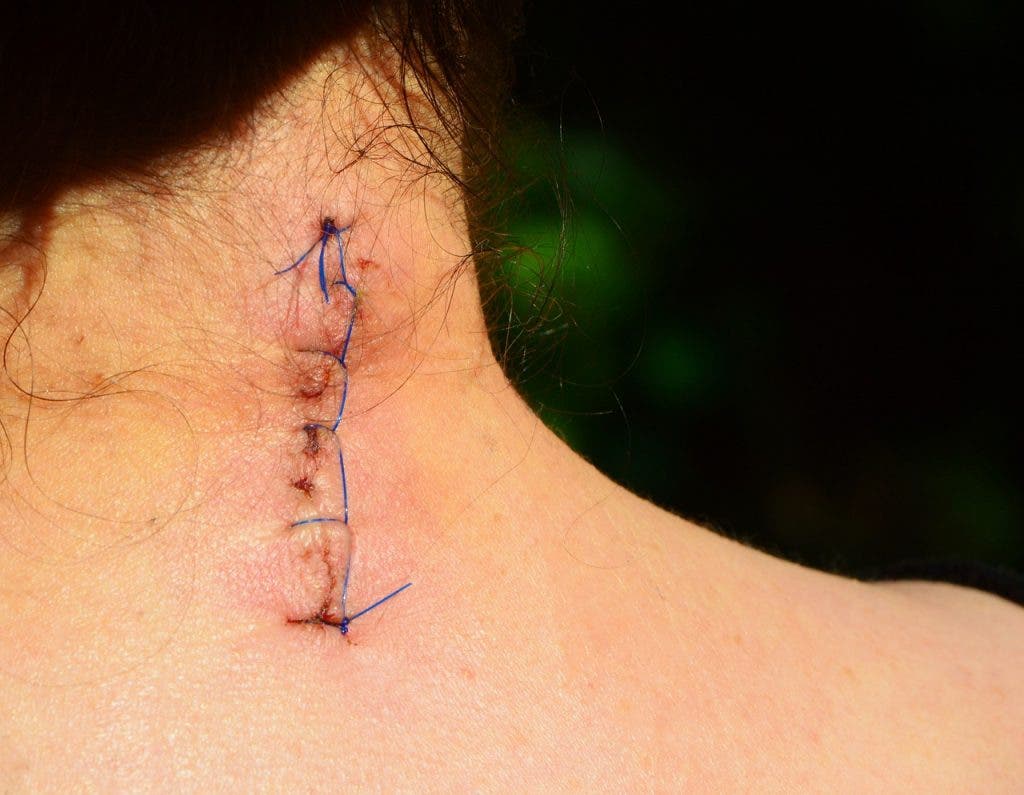
Scars form when the dermis, the deep, thick layer of skin, is damaged. Although scarring is a natural part of the body’s healing process, scar tissue has a different texture and quality than the surrounding tissue. Suffice it to say, some people would rather do without scarring, especially if they form around visible areas of the body, such as the face.
Healing deep wounds without scarring may be indeed possible, according to a new study authored by Michael Longaker, a surgeon at Stanford Medicine, and colleagues.
The Stanford researchers discovered that a certain drug applied to a surgical wound in mice under anesthesia later led to healed skin that looked completely normal.
“The first thing we were shocked by was all the hair in the healed wound,” Longaker said. “We were also able to see normal glands and showed that the skin was just as strong as unwounded skin.”
Nature’s skin sealant
There are several types of scars, but they all appear due to collagen built up where the tissue is damaged. This helps seal an opening in the skin much more quickly than simply regenerating new normal skin. If we didn’t form scar tissue, wounds would heal over slowly, which might lead to an infection or severe loss of blood.
The drawback is that scar tissue compromises the form and function of the skin. Scar tissue doesn’t have any hair follicles, nor any sweat glands. It is also inflexible and weaker than the skin, thereby limiting our body’s ability to move or regulate temperature. In some places where a scar forms, people might not be able to move their elbows or close their eyes.
Before the advent of antibiotics and modern medicine, scar tissue would have saved lives. But nowadays it can be more of a nuisance that can lead to disability and emotional problems if scarring occurs in a distressing location such as the face.
Like the skin of a fetus
Back in 1987, while he was still a postdoc in a lab at the University of California, San Francisco, Longaker’s mentor and surgeon Michael Harrison asked him to investigate why wounds on the skin of fetuses heal without scarring.
This quest occupied Longaker’s mind for the next year, then the next four years, then for decades. It was only recently that the researcher was able to find a satisfying answer.
Longaker’s team observed that tension during wound repair plays a major role in scarring. Because the skin of a fetus is gelatinous, basically the antithesis of ‘tightness’, the skin is loose enough to prevent the formation of scar tissue.
During experiments, the researchers found out that a gene called ‘engrailed’ helps create a protein sometimes found in fibroblasts, which are a type of skin cell that drives scarring. Working with sedated mice, the researchers found that a subpopulation of fibroblast cells in the skin that normally don’t express the gene starts to do so during the scarring process.
The role of mechanical stress in scar tissue formation was also thoroughly investigated. The researchers harvested fibroblast cells that did not express engrailed and grew them in the lab in three different environments: a soft gel, a stiff plastic dish, and on the same strain-inducing plastic but in the presence of a drug that blocked mechanical-strain signaling.

Fibroblasts grown in the tension-free gel did not express the scar tissue forming gene, unlike the cells grown in the stress-inducing plastic. But adding verteporfin, a drug approved by the FDA to treat eye disease by blocking the mechanical stress signaling in cells, caused the cells not to express engrailed despite the fact that they were growing on plastic.
In their final experiment, the researchers made surgical wounds on mice and applied mechanical strain to the healing wound while they applied verteporfin. When the wound healed, it looked completely normal, with no scar tissue.
The healed skin had hair follicles, sweat glands, and the typical flexibility of normal skin.
Next, the researchers plan on conducting preclinical work in other animals before proceeding with clinical trials in humans if all goes well. The implications could be life-saving, in some situations. For instance, the drug could prevent scarring to the heart tissue following a heart attack.
The findings appeared in the journal Science.









